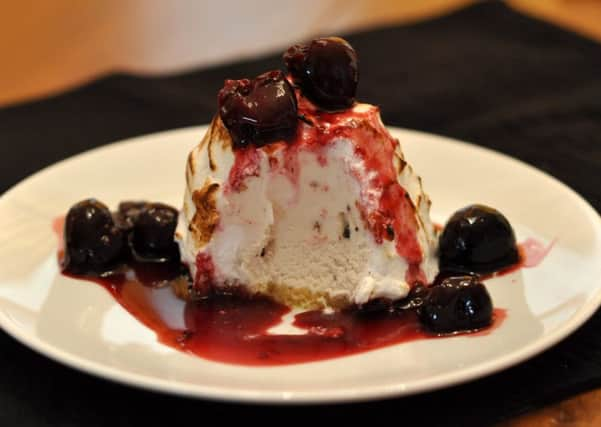Bakery Bulletin by Philippa Kelly: Tom Hanks or Bill Murray and the history of Baked Alaska


When Harold Ramis cast Bill Murray in Groundhog Day, he saw a pay cheque big and fat and a future of royalties. Yet we know that Tom Hanks would have done a much better job.
Groundhog Day is on February 2nd, but it’s the day before that interests me, not least because it doesn’t begin with a serenade by Sonny and Cher, and there isn’t a Duckface in sight. February 1st is Baked Alaska Day. As in the dessert, not a heavy duty stoner session in North America.
Advertisement
Hide AdAdvertisement
Hide AdThe only downside of Baked Alaska Day versus Groundhog Day, asides from the fact that you have to eat a Baked Alaska, is that you can’t punch Ned Ryerson in the face.
If you haven’t seen Groundhog Day, or indeed Four Weddings and a Funeral, then don’t worry, the references stop here. But I am left wondering how you spent the nineties.
Delmonico’s in Lower Manhattan opened in the 19th century. It was a family-run establishment and basically introduced proper restaurants to America.
It was the first restaurant to offer a la carte menus and separate wine lists. It was also the first restaurant to serve a Baked Alaska.
Advertisement
Hide AdAdvertisement
Hide AdIn 1894, chef Charles Ranhofer celebrated the United States acquisition of Alaska from the Russians by making an “Alaska, Florida”.
The idea being a “hot versus cold” battle, epitomised by a dessert. Not wholly appropriate, and also only speculatively true. Why? Because we all know that every semi-decent innovation in baking, or indeed food preparation in general, originated in Italy or France. Ciao, Charles Ranhofer, ciao and bonne chance.
Bonjour la France! Omelette a la Norvegienne predates the Americans’ Baked Alaska. The Norwegian bit is a bad joke based around the cold climate in Norway.
The omelette bit is just because when in doubt, the French say omelette. Or maybe there’s an actual reason behind it. Eggs are in meringues and omelettes, so maybe that’s it. Maybe not. I’m not all that bothered either way.
Advertisement
Hide AdAdvertisement
Hide AdIt has just occurred to me that I’ve neglected to mention the make-up of a Baked Alaska. If you’re unaware of them, the meringue bit just now must have seemed a tad odd. My bad.
A Baked Alaska is a big ball of ice-cream wrapped in cake and then covered in meringue. It’s baked in a very hot oven for a very short period of time, thus ensuring the meringue firms up and goes brown, yet the ice-cream doesn’t melt. Fancy stuff, eh? Yes, and therefore really obviously French.
In 1969, not long after the invention of the microwave oven, a Frozen Florida was invented. It’s like an Alaska, but the wrong way round - the outside is frozen and the innards are hot. Frozen meringue is edible then. What do you know.
In 1974, a special pan was invented. It allowed everyone to make an Alaska - you baked your meringue and shoved your ice-cream through the hole when you were done. Naughty.
Advertisement
Hide AdAdvertisement
Hide AdBombe Alaska is a varient involving fire. It’s the same theory as what your mum used to do to the Christmas pudding. Another version is Hong Kong’s “Flame on the Iceberg”, which I can only assume sounds better in Chinese. It’s the same as the Bombe, but instead of rum, the fire-starter’s whiskey. Did you know that that’s the Irish spelling? The Scots lose the E and just write “whisky”. The Americans copy the Irish. No, it’s not relevant, but it is interesting.
“When Chekhov saw the long winter, he saw a winter bleak and dark and bereft of hope... “
That’s my last Groundhog Day reference. Do you see what I did there? It’s a loop. Like Groundhog Day. See? Yeah, you see alright, you see.